Dragonfly or Damselfly?Side by Side The Little and Large Show The Shell Game Going to Extremes Side by Side answer Going Zen The Rule Acknowledgement of sources
Author Jeff Melvaine ◦
Quiz 3: The Shell Game
A potentially confusing feature here is that each species is seen to be holding its wings both open and closed, and I can tell you that these were definitely not just momentary postures. Also, the body shape and the colours look different. How is this possible? And which species is the dragonfly?
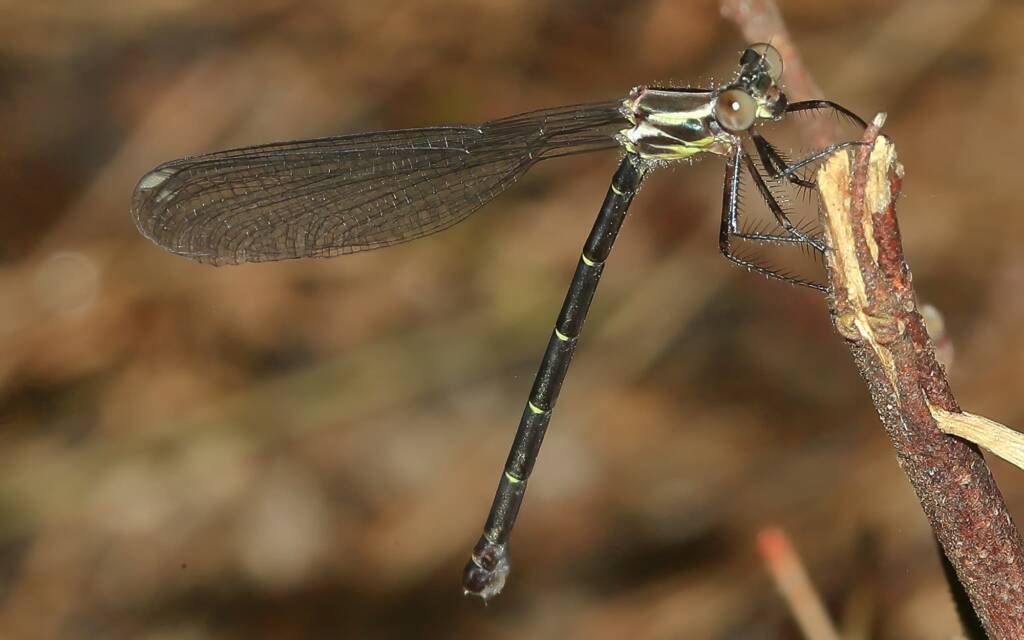
Common Flatwing (Austroargiolestes icteromelas) female, Northbrook Creek, Dundas QLD.
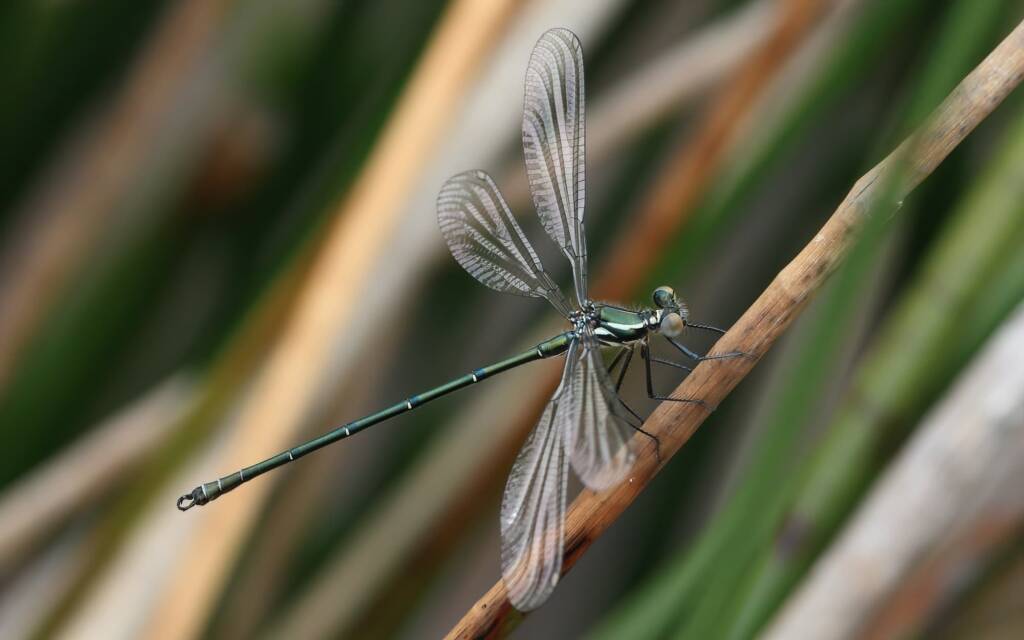
Common Flatwing (Austroargiolestes icteromelas) male, Tenterfield Crk, Northern Tablelands NSW.
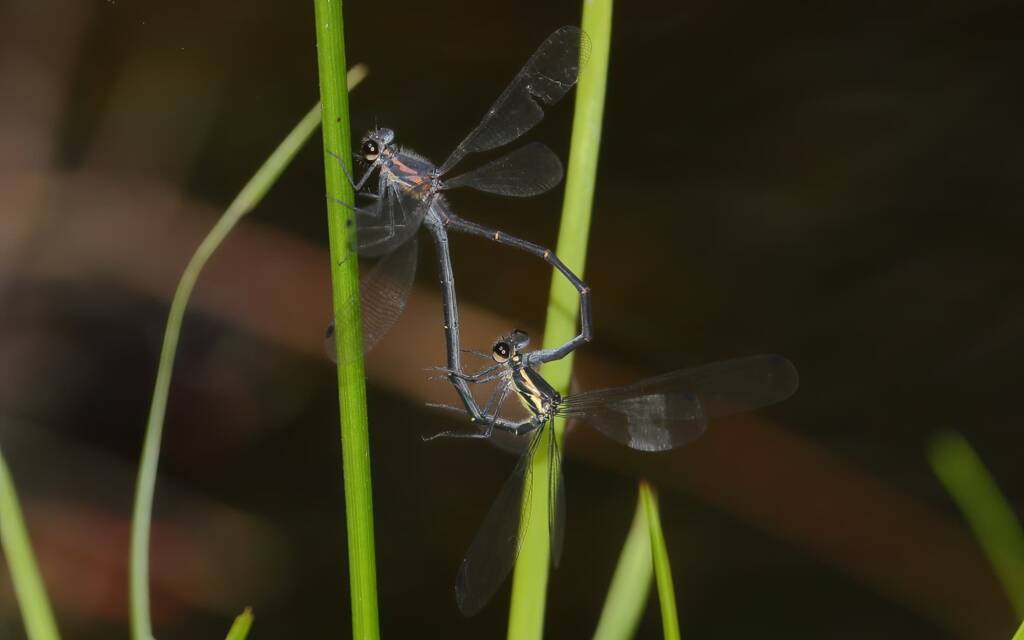
Common Flatwing (Austroargiolestes icteromelas) pair,
McCarrs Creek, Kuring-gai Chase NP NSW.
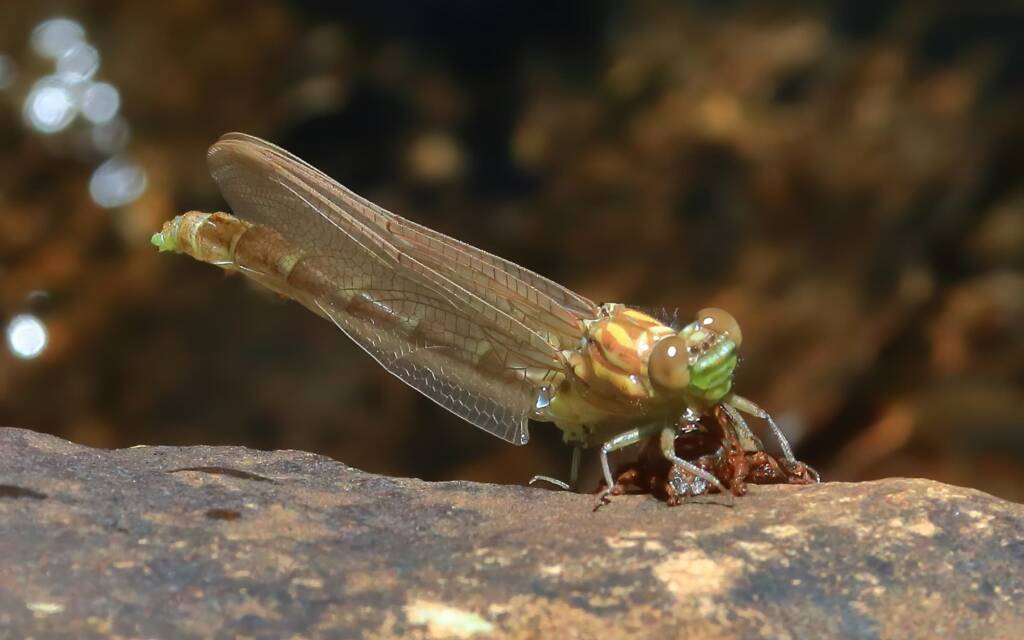
Stout Vicetail (Hemigomphus heteroclytus) male, Rocky Creek Dam, Dunoon NSW.
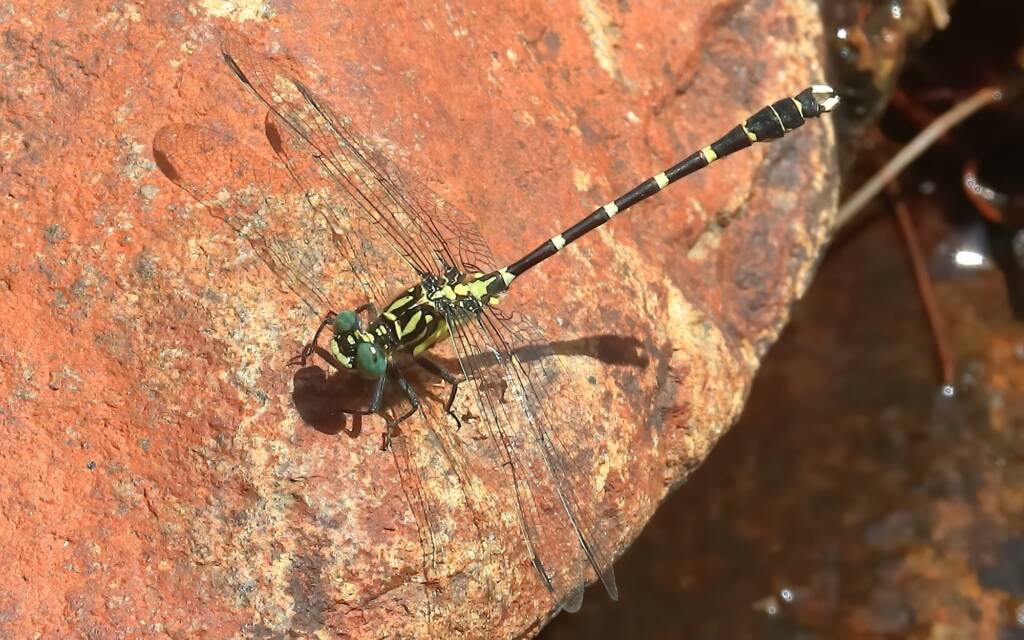
Stout Vicetail (Hemigomphus heteroclytus) male,
at Tallabudgera Creek, Gold Coast QLD.
Quiz 3 SPOILER ALERT
First, notice that the Stout Vicetail with its wings closed is perched on a brown blob. That blob is the larval shell from which it has just emerged, clearly showing the large exit hole; the legs are also visible, although less obvious. The larva has a very squat body shape, and the newly emerged adult is still in the process of expanding into its new, much more elongated form. This includes fully expanding the wings before they harden. As the new adult extracts itself from the shell, the wings are pulled out of their sheaths in approximately the closed position (they still have some unravelling to do), and held close together to assist in pumping them up to the fully extended condition without distortion. Note also how much the whole body changes shape from the larva to the adult, still a work in progress in the first Vicetail picture..
Similar considerations apply to the Common Flatwing with its wings closed. It is rather nearer to reaching its adult form, and has moved away from the larval shell, possibly as a test flight for the newly dried wings. This is a female, and as such will look sturdier than the male you can see in the second Flatwing photo, even with the abdomen at full extension, although much of this will be because of the egg mass accumulating in its abdomen as it feeds after emergence.
Technically, the emerging or recently emerged adult is called a teneral, and it is typically coloured to be as inconspicuous as possible; camouflage is its only defence against predators. When its body has assumed the adult shape and hardened sufficiently to be able to fly, it is called an immature until it assumes full mature colour, although in the case of the Common Flatwing, mature colour is a moving target day by day, and in all Odonate species, subtle indications of aging become progressively more evident.
All dragonflies and damselflies can be seen with their wings closed when they first emerge as adults. But both the Flatwings and the Vicetails perch with their wings spread when mature.
Which is the dragonfly? Well done if you picked up on the view of the Flatwings in copula; the male is clasping the female’s prothorax, so they are damselflies. The stereotype of damselflies as small and slender is exemplified there. But the eyes of the Vicetail (the dragonfly) certainly do not meet in the middle of the head, even when fully expanded after emergence, although the gap between them is relatively narrow compared with that of the damselfly.
In Australia, there are four groups of damselflies that normally hold their wings in the open position when perching. The Flatwings (family Argiolestidae, 23 species in Australia) are the most numerous. The Needles (genus Synlestes, three species endemic to Australia) are commonly seen with wings partly or fully spread. The Spreadwings (genus Lestes) have only one Australian species, the Dusky Spreadwing, L. concinnus; other Australian genera from family Lestidae like Austrolestes (Ringtails) adopt the closed wing perched posture. The last group you will meet on the following page, with another surprise or two to come.
Here is a collation of the Vicetail and Flatwing wing venation, with the Emperor thrown in for comparison. You can see the different forms of the discoidal cells.

Wings Composite Emperor Vicetail Flatwing
The male Vicetail has a notch in the base of the hindwing (“angulation”) to avoid in flight damage from the auricle, which is the small yellow ear-like protrusion near the base of the abdomen. The auricle is present in some species of dragonfly only, and helps to guide the female abdomen into contact with the secondary sexual apparatus of the male.
Quiz 3 TLDR Summary
Some damselflies hold their wings open when perched; the Common Flatwing is one of 32 Australian species that do this.
All adult Odonates (dragonflies and damselflies) emerge from the last stage larval shell with the wings in a closed position, and keep them there at least until they have dried and hardened sufficiently to fly with; in some cases they return to that position after a few early test flights, even though the mature adult keeps them open when perched. This can cause confusion to inexperienced observers.
Some dragonflies (the Vicetail here is an example) have angulation (a “missing piece”) near the base of the hindwings to avoid collision with the auricles when flying. No damselfly has these features.
Dragonfly or Damselfly?Side by Side The Little and Large Show The Shell Game Going to Extremes Side by Side answer Going Zen The Rule Acknowledgement of sources
Footnote & References
- Author Jeff Melvaine / Photographs © Jeff Melvaine
- Wings Composite Emperor Vicetail Flatwing collations. Source: John Tann, Wikipedia
Dragonflies & DamselfliesDragonfly or Damselfly? Sex Lives and Dragonflies Damselflies Diplacodes haematodes Hemicordulia tau Orthetrum caledonicum Orthetrum migratum Orthetrum villosovittatum
InsectsBees Beetles Blattodea Butterflies Coleoptera Cicada Crabronidae Diptera Dragonflies & Damselflies Formicidae Hemiptera Heteroptera (True Bugs) Mango Planthopper Moths Orthoptera Orthopteroid Processionary Caterpillar Stink Bugs, Shield Bugs and Allies Syrphidae Wasps Water Scorpion (Laccotrephes tristis) Witchetty Grub
